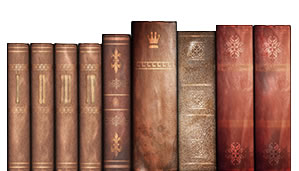Travel back in time to 1947 and watch this documentary on how books are made.
Fascinating.
The phrase “hot off the press” came from this molten lead process.
However, remember that it still begins with you, the author.
[If you are unable to view the video in your email, please visit the site where it is embedded.]



OSHA would have a fit! No eye protection, no hearing protection (print shops are LOUD), and the gals are wearing clothing wildly inappropriate to work around moving machinery. Not to mention fumes from molten lead…
I had the privilege of working in a pressroom, with a slightly more modern printing process (offset, which requires photographing the text, developing the negatives…noxious fumes…and transferring the images to printing plates) but with everything else pretty much as in the video. The pace was of necessity fast, the danger to fingers very, very clear.
I understand it’s much more automated now, and I thank God for progress.
***
Way back in the bad old days
when the printing world did linger
in the old time-honored ways
you could quickly lose a finger,
folded, spindled, mutilated
by clacking machines
that in quick seconds violated
your piano-playing dreams,
but in a way I kinda miss
the smell of ink and oil,
the paper-track’s metallic hiss
and the hard and weary toil
that helped me to understand
what it was to be a man.
Wow! Thanks for sharing this, Steve. My uncle Steve was a bookbinder during that time in New York city. We were blessed with free books that weren’t considered worthy for distribution.
That was an impressive process of taking thoughts and imagination from intangible mind to printed page.
Incredible! My dad had two black iron (?) behemoths in his newspaper office. What’s missing in this video is the noise. Those presses were SO loud!
Thanks for sharing.
Wow! Respect for the process. It’s a wonder a book was produced with pages in order and no typos!!! This was amazing to see. Thanks for sharing, Steve.
LOL! That’s EXACTLY what I thought too!
It wasn’t long after this that the printing process abandoned the molten metal type and shifted to a photographic process where pages were laid out and photographed by a massive camera built into the wall of the print shop. The negatives were cleaned up and then used to create a positive image on a flexible sheet of metal and finally onto an offset printing press. I got to learn the process in high school volunteering in our church’s print shop and in a graphic arts class at school. I even took more training in print making in college where we did have print blocks made out of molten metal to produce business cards with a slight embossing. All of that helped me appreciate all the behind the scenes activity and skill needed to produce even the simplest publication.
Watching that whole process, all I can say is it’s a miracle that we had books in the proper page order at all. I kept envisioning someone accidently dropping a plate LOL.
Completely amazing!!!
I’m confused.
Why don’t they just order a self-published book on Amazon who will spit it out in a single day and deliver it the next?
How incredible! I had no idea that things were that complicated, back in the day.
WOW! Bet none of us will every throw an old book around now that we’ve seen this. Thanks, Steve.
As a journeyman machinist and manufacturing engineer, I awe at the ingenuity that went into building all those machines!
My favorite part of the narration is the mention of 40 and 50 year old girls. When did we get so sensitive about gender description?